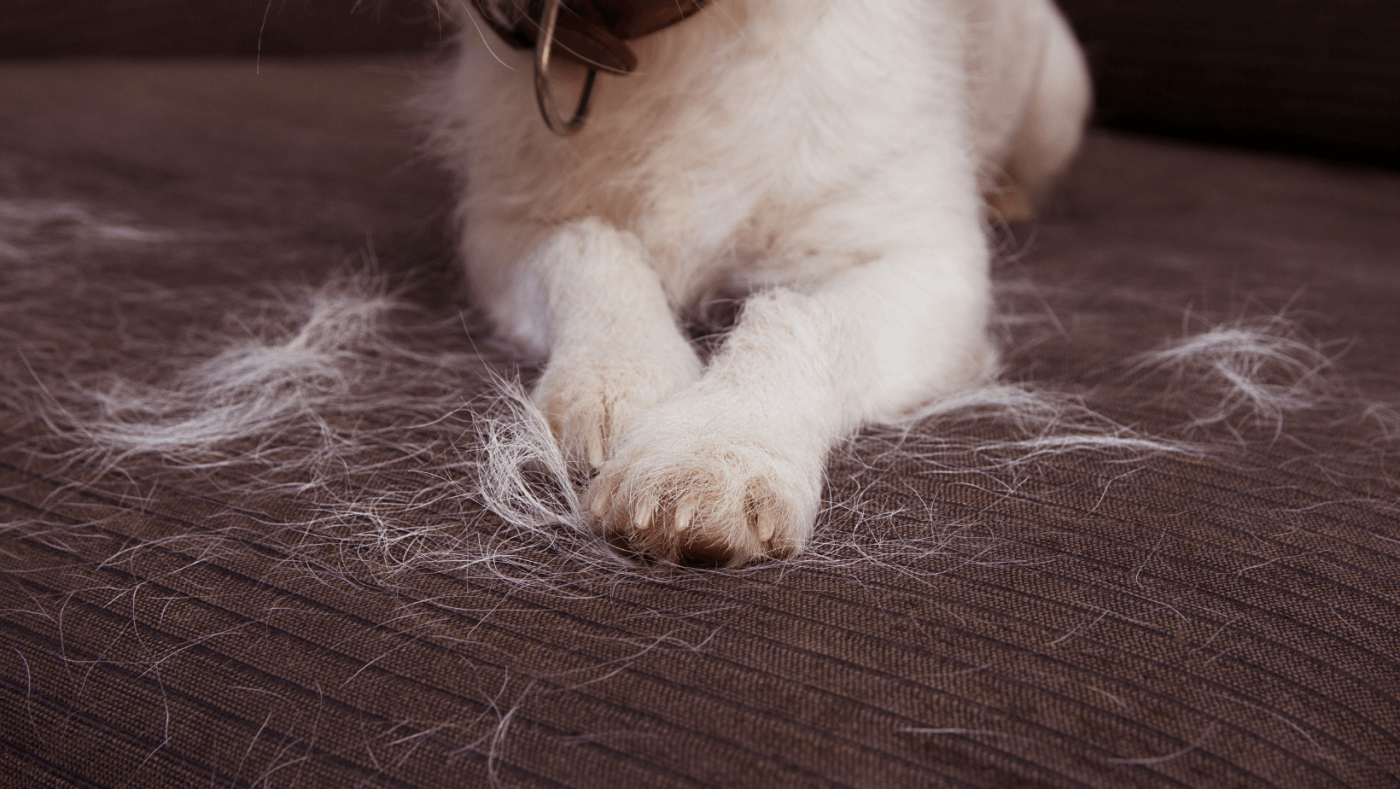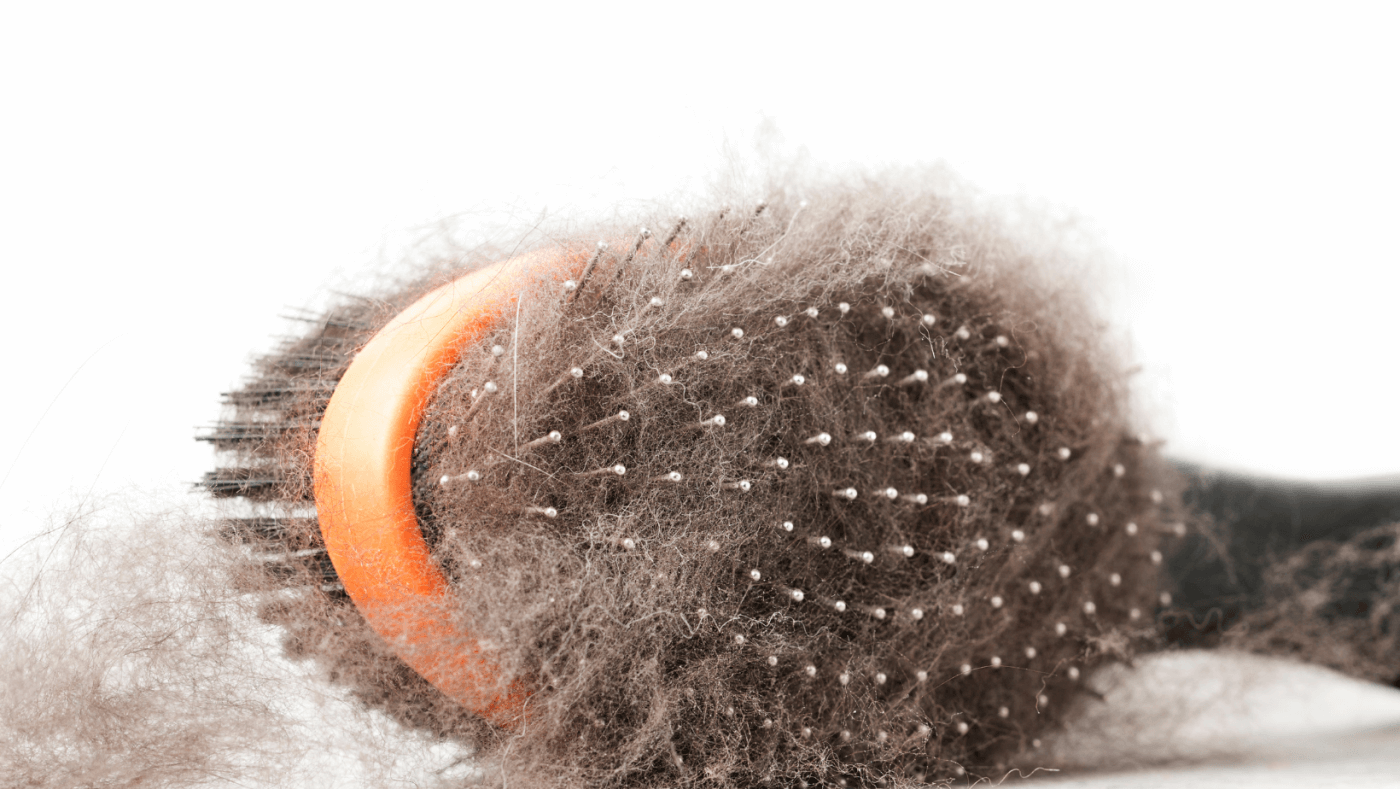Understanding the Dog Shedding Cycle
All dogs shed hair as part of their natural growth cycle. Dogs typically go through four phases of hair growth:
Anagen Phase
This is when new hair starts growing. This phase can last several months.
Catagen Phase
The hair stops growing during this transitional phase, which lasts 1-2 weeks.
Telogen Phase
The hair rests and waits to be shed during this phase, which lasts 1-5 months.
Exogen Phase
The hair is shed during this phase, lasting 2-4 weeks. The cycle then starts over again.
Shedding allows new coat growth and gets rid of old or damaged hair. However, excessive shedding can create issues with cleanliness, allergies, and discomfort for both dogs and owners.

Breeds that Shed the Most
Some breeds are more profuse year-round shedders than others:
Double-Coated Breeds
Double-coated breeds like Akita, Alaskan Malamute, German Shepherd, Golden Retriever, and Labrador Retriever tend to “blow” their undercoats seasonally in the spring and fall. Their topcoat and undercoat shed heavily during these periods.
Single-Coated Breeds
Single-coated breeds like the Afghan Hound, Poodle, and Schnauzer shed moderately year-round. Their shedding may increase seasonally but not as dramatically as double-coated breeds.
Tips to Reduce Dog Shedding
While shedding is natural, there are ways to manage it:
Brush Frequently
Regular brushing helps remove dead hair and prevents matting. Use an undercoat rake on double-coated breeds.

Bathe Occasionally
Bathing every 2-3 months removes dead hair and skin. Use a moisturizing shampoo made for dogs.
Consider Supplements
Supplements with omega fatty acids support skin and coat health. Consult your vet before starting any supplement.
Clean Regularly
Vacuum frequently and wash dog bedding to remove excess hair. Robot vacuums with tangle-free brushes are great for pet hair cleanup.
Groom Professionally
Take your dog to a professional groomer periodically for bathing, brushing, and haircuts.
Improve Nutrition
Feed a high-quality diet rich in nutrients that support skin and coat health.
Manage Stress
Stress can increase shedding. Make sure your dog gets adequate exercise and enrichment.
Check for Skin Issues
See your vet if your dog has excessive shedding, skin irritation, or hair loss. Underlying problems need diagnosis and treatment.
Tips for Managing Dog Hair in Your Home
While you can’t completely stop shedding, you can take steps to control the amount of dog hair in your home:
Use Washable Furniture Covers
Slipcovers and blankets protect upholstery and are easy to remove for washing.
Vacuum Often
Vacuum carpets, rugs, and upholstery frequently, at least once a week. Use vacuum attachments to reach crevices.
Do Laundry Regularly
Wash sheets, towels, dog beds, and clothes weekly to remove clinging hair.
Dust Regularly
Dust hard surfaces frequently to pick up hair before it accumulates.
Use Lint Rollers
Keep lint rollers around the house for quick hair removal from furniture, carpets, clothing, etc.
Bathe and Brush Before Guests Come Over
Give your dog a quick bath and brushing before the company comes over to minimize shedding on their clothing.
With some preparation and diligent cleaning habits, you can successfully manage dog hair in your home. The extra effort is worth it to share your life with a furry companion!


